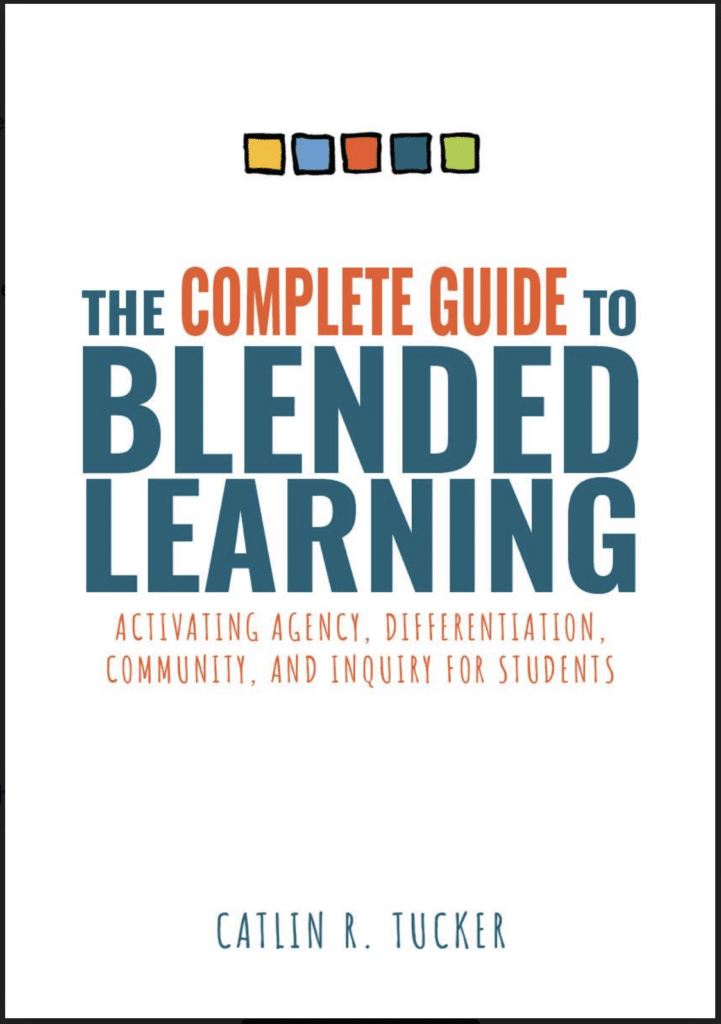Creating a Positive and Productive Learning Community – Dr. Catlin Tucker
[ad_1]
“Are we likely to chat about classroom administration?” Numerous of my graduate college students requested this question previous week as we organized to enter the closing thirty day period of our solutions class. It was obvious that as they approached the finish of their perform in the Masters in the Arts of Instructing program that they felt unprepared for this factor of training. I recognize the anxiety. It is really hard to instruct if the class is acting out and exhibiting distracting behaviors or jeopardizing the safe and sound room learners want to take educational pitfalls.
I am not a admirer of the idea that teachers need to control learners as an alternative, I’d like to target on supporting students in discovering how to manage themselves by developing their self-regulation abilities. On the other hand, even if the goal is to support pupils control their own behavior and emotions, the instructor plays an vital purpose in that process.
Marzano and Marzano (2003) wrote an article titled “The Important to Classroom Management” that asserts “the high quality of teacher-university student relationships is the keystone for all other elements of classroom administration.” The report explores a few particular trainer behaviors that lead to the most efficient instructor-student relationships, so resulting in more robust classroom management.
- The teacher’s ability to supply “strong steerage regarding each lecturers and student actions.”
- The teacher’s skill to show problem for students’ requires and to lover with pupils in the mastering procedure.
- The teacher’s ability to be mindful of high-requirements college students and respond correctly, altering their responses based on the scholar.
Let us split these down and take a look at what these trainer behaviors look like in observe.
Supply Powerful Steerage About Habits
Very first, teachers will have to build apparent anticipations for habits. I consider this is most effective accomplished by participating the class in co-constructing agreements. Students have valuable prior expertise on this subject they can draw from. They know what makes them truly feel safe and supported in finding out environments. They also know what makes them experience unsafe or unpleasant using educational risks in a classroom. So, lecturers can check with their students to attract on their prior encounters in school to compile a checklist of behaviors and norms they imagine will make the classroom group feel protected, supportive, and successful.

Phase 1: Mirror on Past Ordeals
Question students to explain understanding environments that have manufactured them truly feel safe sharing their strategies, partaking with classmates, and having hazards. What was it about those classes or spaces that produced them experience snug? Then, ask them to describe a minute in college when they did not experience comfortable sharing their concepts, engaging with classmates, or having dangers. What has occurred in these moments that manufactured them truly feel unsafe or unpleasant?
Instructors can give college students a number of means to seize their reflections to clear away obstacles. Some learners may want to reflect in writing, whilst other people may possibly like to report a online video or attract a concept map or sketchnote.
Phase 2: Collaborate to Detect Vital Norms and Behaviors
- Make tiny groups of students.
- Give them time to share and go over their past experiences.
- Encourage them to discover a few norms or behaviors they think are crucial to developing and protecting a safe and sound mastering setting.
- Ask them to produce their norms or behaviors on a paper or write-up them to a digital publish-it notice wall, like Jamboard or Padlet, and have just one pupil completely ready to share their norms with the course.
Action 3: Create a Class Established of Agreements
- Talk to just one human being to share their group’s 3 norms and briefly reveal why these norms should really be added to a course established of agreements.
- Once all norms have been shared, give pupils time to review them (e.g., silent gallery wander). If they captured their norms on poster paper or submit-it notes, request them to set dots on the five norms they believe are most crucial. If they posted their norms online, inquire them to heart or submit a comment to the norms they want to decide on. Creating a warmth map with dots, hearts, or feedback assists the mastering local community establish the norms they worth most.
- Compile the major 10 norms into a class agreement of agreements for college students and parents to examine and indicator.
Teachers may perhaps want to facilitate this procedure for general class norms and specific norms for pursuits like dialogue, collaboration, transitions, and unbiased get the job done.
Develop a Clear Path of Implications
At the time the course neighborhood has proven agreements to information their interactions and behaviors, academics must create a obvious route of effects. The a lot more transparency academics develop all around what will happen if a scholar is disruptive or violates a course arrangement for actions, the a lot less possible a consequence will end result in a electrical power battle in the classroom.
When doing the job with a class that was about to begin applying the station rotation design, I engaged the team in the exercise higher than to recognize behaviors they thought would make rotations runs easily. Then I requested teams of learners to go over a series of outcomes they assumed had been acceptable for disruptions or disrespectful conduct during the rotation. The series of effects pictured under is what they arrived up with as a course.

- To start with disruption: The pupil receives a verbal warning inquiring them to appropriate the behavior and stating how that actions is negatively impacting the learning natural environment.
- 2nd disruption: The university student moves to a “floater desk” apart from a team to function on their possess for the remainder of the course.
- 3rd disruption: The university student has a discussion with the teacher about the conduct and completes a protected room reflection about what led to the habits and how they can steer clear of it in the foreseeable future.
- Fourth disruption: The scholar contacts their guardian or guardian by e mail or cellular phone to explain the scenario.
An additional exercise I like to aid is “What’s the consequence?” It asks learners to recognize specific missteps that could occur in a particular predicament, like on-line conversations or collaborative team function. I request them to perform in teams to explain attainable missteps or destructive behaviors. Then they change files with an additional group and talk about what they think would be correct effects for each individual misstep.
This action aims to elevate consciousness about particular behaviors that are not effective or could make other college students feel awkward engaging with each other. Teachers can choose if they want to pull from this action to generate consequences for missteps for the duration of a particular understanding exercise, like dialogue or group perform.
Be Assertive and Constant
Partaking the group in the co-development of course agreements and a route of implications are vital ways in cultivating a supportive and favourable learning group, but missteps will occur. Students are mastering to control their behavior and their emotions. Making errors is a all-natural portion of that course of action. So, teachers will need to navigate those people situations devoid of harmful their interactions with learners. Instructors must also preserve in intellect that they will have significant-want students who may perhaps have to have extra delicate interventions. For instance, I experienced a pupil with an psychological disturbance IEP and working with him in times when he violated a course arrangement essential much more health.
Under are some ideas to maintain in thoughts when running these times:
- Do not ignore bad habits.
- Use actual physical proximity and eye get in touch with to signal that behavior is not ok.
- Be regular with repercussions.
- Really do not talk in excess of pupils.
- Make certain the interventions are a lot less disruptive than the behavior you are attempting to suitable.
- Stay clear of community electrical power struggles by pulling college students aside to focus on a distracting or adverse conduct.
- Be respectful and crystal clear about the why. Why is this behavior unacceptable? How is it negatively impacting the understanding neighborhood?
- Have interaction mom and dad or guardians if detrimental or distracting behaviors continue.
Classroom management offers an option to interact the class neighborhood in discussions that aid them establish a greater degree of awareness about their conduct and what is predicted of them in an tutorial setting. If instructors check out their college students as associates and engage them in defining class agreements and implications, pupils are extra probable to comply with the expectations simply because they have played a position in articulating them.
Classroom administration can experience difficult to deal with as a new instructor, or even for quite a few proven academics. It is tempting to bounce into “covering curriculum” at the begin of the 12 months rather of laying a firm basis for what is predicted as the class community engages with every single other to make meaning and collaborate around shared jobs. This foundation requires time to establish, but it pays dividends as pupils work to make this means and collaborate about shared jobs. The additional harmless, supportive, and positive the discovering setting, the a lot more probable college students are to choose dangers and authentically engage with each and every other.
[ad_2]
Resource connection






